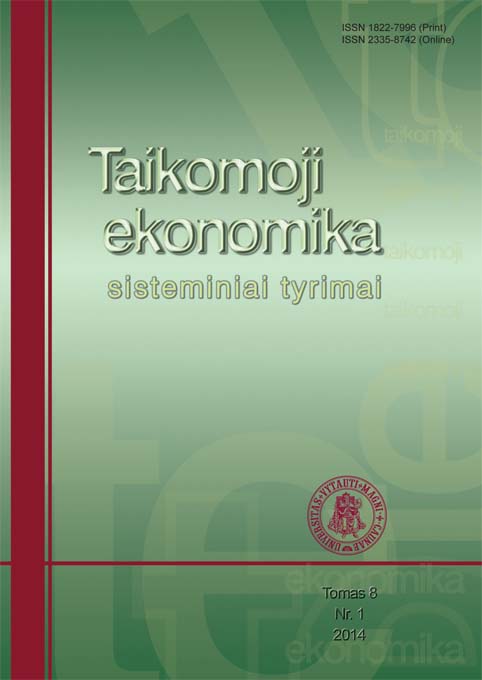Bankroto diagnostikos modelis ir jo pritaikymas bankroto tikimybei Lietuvos įmonėse prognozuoti
Bankruptcy diagnostic model and its application to predict company’s bankrupt likelihood in Lithuania
Author(s): Mindaugas Butkus, Sigita Žakarė, Diana CibulskienėSubject(s): Economy
Published by: Vytauto Didžiojo Universitetas
Keywords: Bankrotas; Prognozavimas; Logistinė regresija; Bankruptcy; Prediction; Logistic regression
Summary/Abstract: Bankroto tikimybės prognozavimas pripažįstamas kertiniu norint išvengti šio reiškinio ir jo sukeliamų pasekmių. Bankroto tikimybės prognozavimui siūlomi skirtingi modeliai, tačiau, moksliniai tyrimai patvirtina, kad jie nėra pilnai tinkami Lietuvos įmonėms. Šiame straipsnyje pristatomas modelis, grindžiamas binomine logistine regresija, skirtas prognozuoti bankroto tikimybę Lietuvos įmonėse. Businesses are constantly accompanied by uncertainty and risky decisions in dynamic and competitive market economy. In this context, corporate bankruptcies have become an unavoidable phenomenon the consequence of which is not only a problem of the companies themselves, but also determine the overall development of the country’s economy. This process plays an important role in the economy because challenges companies to look for new ways to improve their performance and naturally remove inefficient participants from the market, promote competition. Various scientists have suggested many different bankrupt likelihood prediction models, but researches confirm that they are not entirely suitable for Lithuanian companies. In order to ensure business continuity it is important to prepare a model which could precisely predict bankrupt likelihood in Lithuanian companies. Both Lithuanian and foreign scientific studies focus on new specific bankrupt likelihood prediction models, but their application needs specific information. Scientific research results shows that most suitable models to predict bankrupt likelihood in Lithuanian companies are based on logistics and the multiple logistic regression. In this context, the new bankrupt likelihood prediction model is formed on the basis of logistic regression. Scientists developed various bankrupt likelihood prediction models at different times and in countries which differ in terms of development level, competitive conditions, and other characteristics. They are created using different financial data and different indicators. Country and activity specific models reduce the precision level at which they predict bankrupt likelihood in Lithuanian companies, so there is a practical problem – these models are not enough accurate for prediction. Solution to this problem, and thus the purpose of the research – to develop a model which allows accurately predict bankrupt likelihood in Lithuanian companies. The article is divided into three main parts: firstly we present analysis of bankruptcy diagnostic system; secondly, on the basis of theoretical analysis, we motivate logistic regression technique which will be employed to create bankrupt likelihood model for Lithuanian companies; thirdly, on the basis of empirical research, we present bankrupt likelihood model for Lithuanian companies also its activity and size specific variations and perform model quality and reliability assessment.
Journal: Taikomoji ekonomika: sisteminiai tyrimai
- Issue Year: 8/2014
- Issue No: 1
- Page Range: 111-132
- Page Count: 22
- Language: Lithuanian

